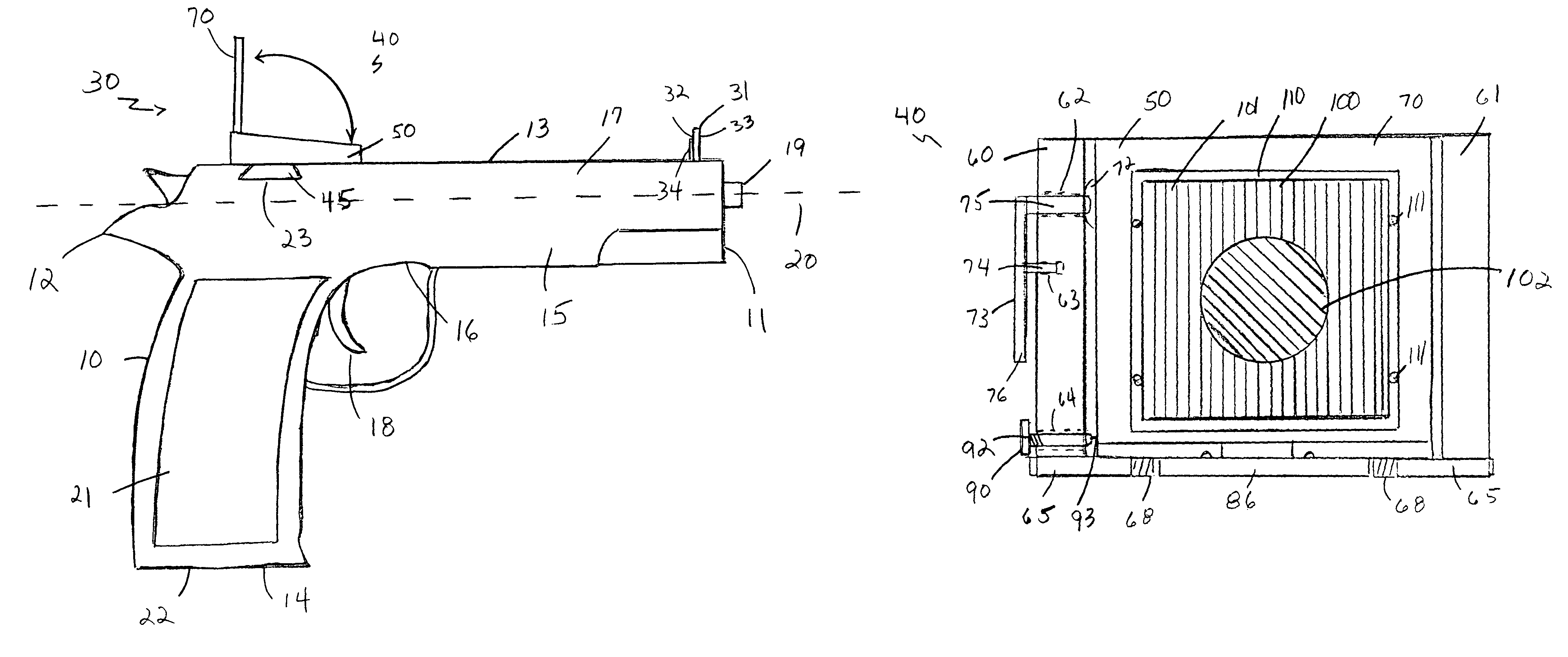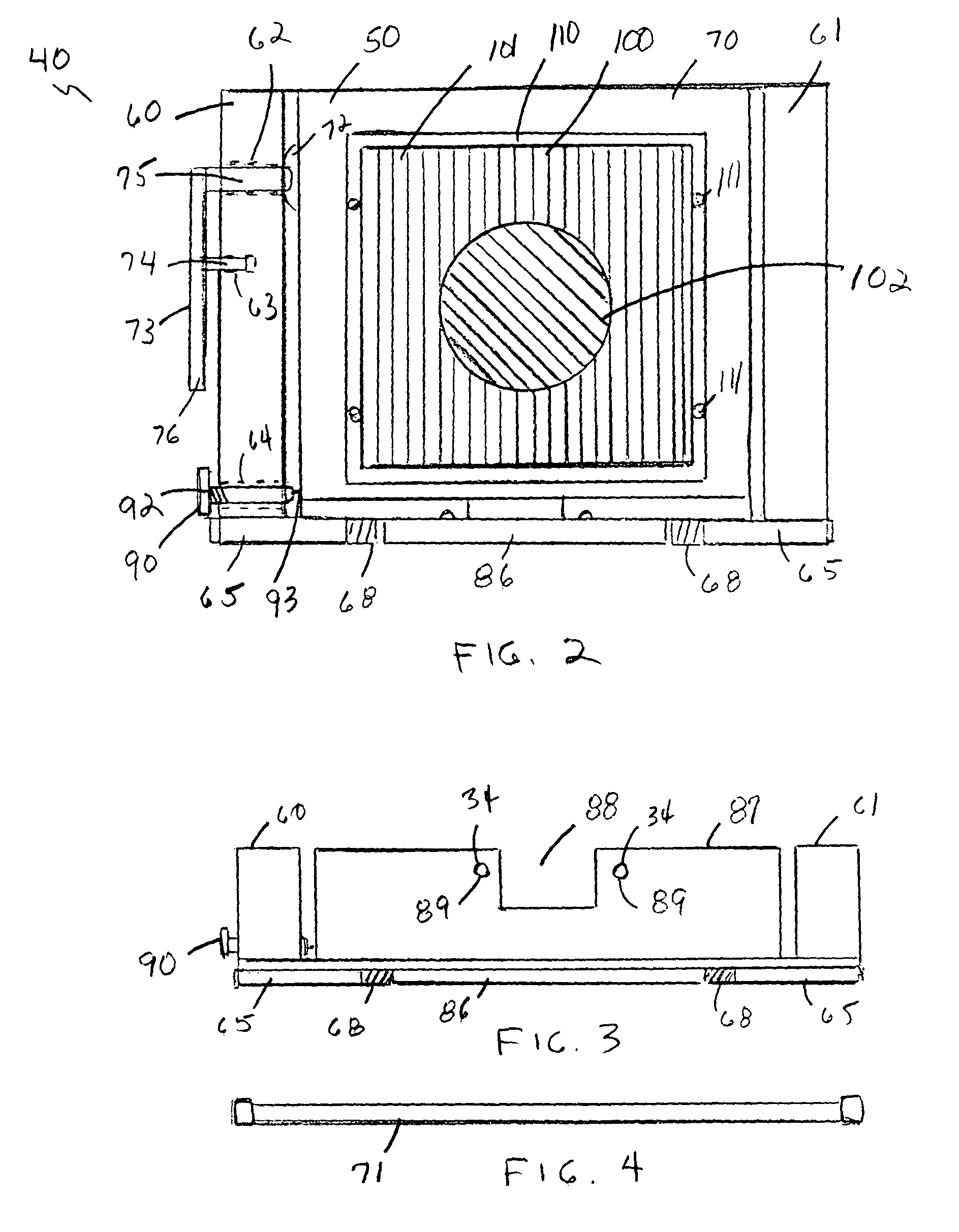Flip-up aiming sight
a aiming sight and flip-up technology, applied in the field of flip-up aiming sight, can solve the problems of distance-only eyesight, rear sight, alignment of front posts, difficulty of human eye in focusing simultaneously on three separate objects, etc., to achieve the effect of facilitating ease, speed and accuracy, detecting changes in color faster and more accurately
- Summary
- Abstract
- Description
- Claims
- Application Information
AI Technical Summary
Benefits of technology
Problems solved by technology
Method used
Image
Examples
Embodiment Construction
[0030]Referring to the drawings in detail wherein like elements are indicated by like numerals, there is shown an aiming system 30 constructed according to the principles of the invention, said aiming system 30 being mounted on a handgun 10. For purposes of exposition, the handgun shown is a conventional auto-loading, semi-automatic pistol. The handgun 10 has a front 11, rear 12, top 13, bottom 14, and two opposite lateral sides 15. The handgun 10 is further comprised of a frame 16, a slide 17 and a fire control mechanism that operates via actuation of a trigger 18. The slide 17 is that portion of the handgun that forms the top of the handgun and is displaceable on the frame 16. The slide houses a barrel 19 in the forward end thereof. The barrel 19 is cooperatively linked with the slide 17 and, together with the slide 17, defines a longitudinal firing axis 20. The handgun bottom 14 is defined by a handgrip 21 into which a magazine 22 is inserted. Upon handgun discharge, the slide 17...
PUM
 Login to View More
Login to View More Abstract
Description
Claims
Application Information
 Login to View More
Login to View More - R&D
- Intellectual Property
- Life Sciences
- Materials
- Tech Scout
- Unparalleled Data Quality
- Higher Quality Content
- 60% Fewer Hallucinations
Browse by: Latest US Patents, China's latest patents, Technical Efficacy Thesaurus, Application Domain, Technology Topic, Popular Technical Reports.
© 2025 PatSnap. All rights reserved.Legal|Privacy policy|Modern Slavery Act Transparency Statement|Sitemap|About US| Contact US: help@patsnap.com



